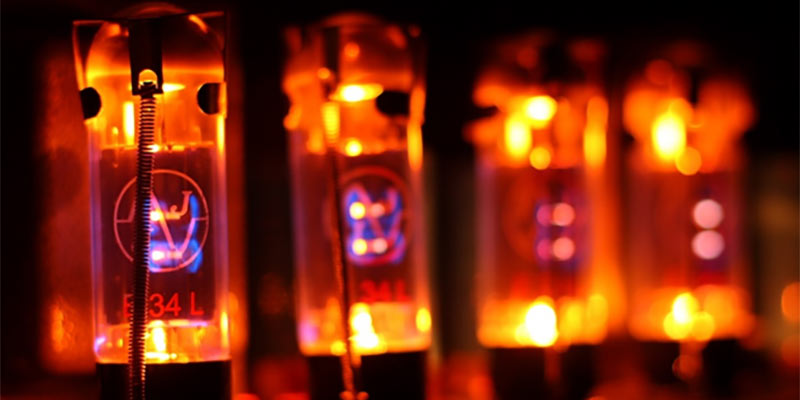
A vacuum tube is transconduct device that is actually a sealed glass tube. Inside the tube, there is a set of carefully arranged gears which works for controlling electric current. Inside the tube, there is no air. Under the tube, there are wires that come outside from inside the tube. This is what you can see when you look at a vacuum tube. The details answer of the question- how does a vacuum tube work is discussed later.
A vacuum tube was used in many electronic devices. But with the development of science and technology, in most of the cases, vacuum tubes are replaced with transistors and many other circuits. Still, these have some applications in some cases. So, you will find different types of commercial vacuum in the market. Let’s dive deep into vacuum tube.
Vacuum Tube: The Process of Working
I have already said that vacuum tube is a sealed glass tube with no air inside. The air is taken out from the tube by a powerful vacuum pump before sealing the tube. Inside the tube, there a few components are placed before sealing it. The components are-
1. Cathode: A cathode inside the vacuum tube is normally used for generating electron. When it is made excited by heating it directly or indirectly, it starts to release electron. Different vacuum tubes use different cathodes. But there are mainly two types of cathodes that are used most.
The lifetime of the cathode is important because it determines the lifetime of vacuum tube. The lifetime of cathode depends on various things such as voltage, element of the cathode, purity of the materials of cathode etc.
2. Anode: Anode is commonly known as plate. Or you can say that there is a plate which works as an anode. The main job of the anode is to receive the electron emitted by the cathode. As it receives electron flow, it may become hot. So, a plate is designed in such a way so that it can make itself cool.
Anode should be made of such element that can tolerate high temperature and reflect less secondary electron.
This is the common structure of the vacuum tube. By adding some grids, it can be made as Triode, Tetrode and Pentode.
If you add a control grid inside of the vacuum tube, it can be called as triode. Secondary emission can happen inside a vacuum tube. It generally happens when the electrons hit a smooth metal surface. If secondary emission goes high, it destroys the system. The grid is used to reduce secondary emission.
If another grid is added between the control grid and the anode, it turns into tetrode. The new grid, generally called Screen Grid, is placed to reduce the effect of Miller effect and increase gain. It is normally a power tube which carries current. It is coated with graphite which keeps it cool.
You can use another grid between the plate and the screen grid and turn it into a pentode. This third grid is called as suppressor grid. It is used to collect the electron produced from secondary emission.
When heat is generated in or provided to the cathode, it becomes hot and starts to emit electron. The anode receives the electron. The anode is positive and electrons are negative. The anode is prepared to have a large positive voltage through some kind of load. When the electrons hit it, it produces a relatively large amount of voltage.
This is how does a vacuum tube work as an amplifier.
